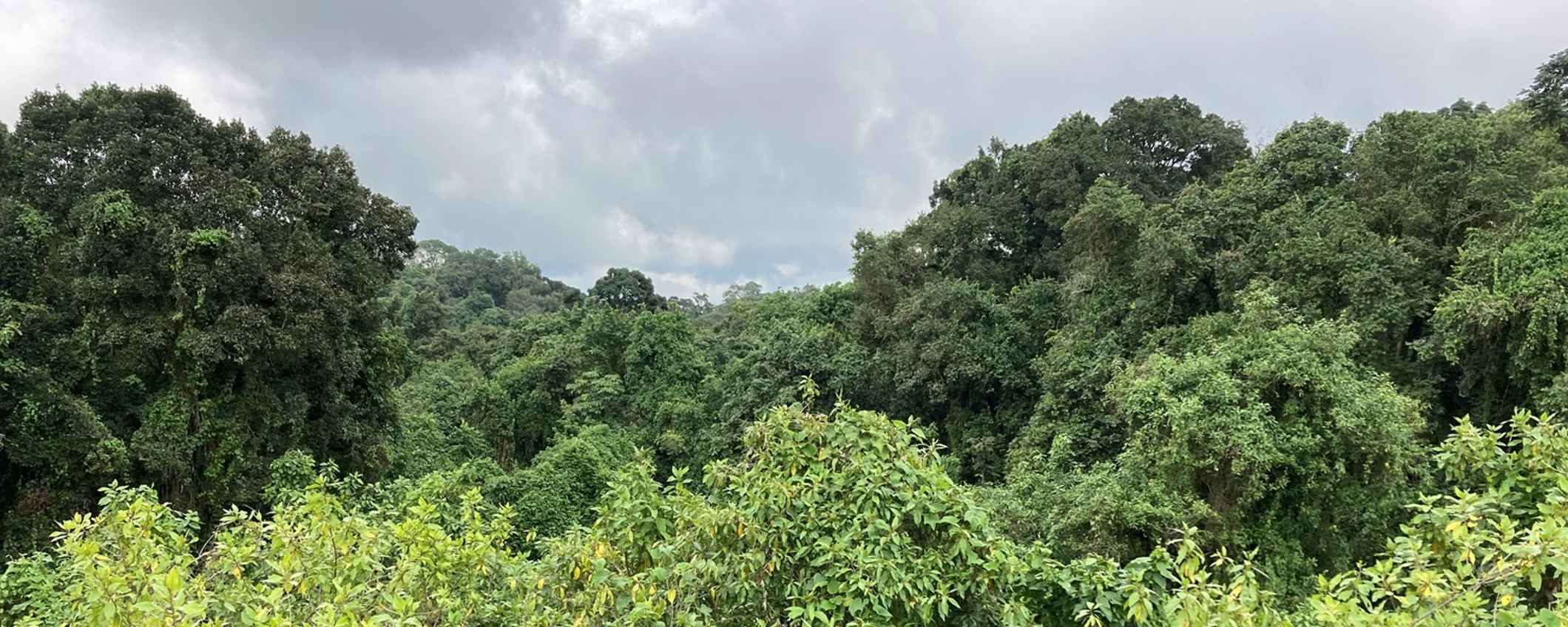Nature-based solutions refer to sustainable initiatives that restore and protect natural ecosystems, delivering environmental, social, and economic benefits. As David Diallo explains, “NbS is a mechanism that helps us distribute new funds to communities living in endangered ecosystems.” Goodcarbon’s flagship project in Gujarat, India, exemplifies this approach, with efforts to restore 1,200 kilometers of degraded coastline and mangroves, enhancing biodiversity, capturing carbon, and improving local livelihoods.
These projects often tackle multiple interconnected problems. For example, the restoration of mangroves not only captures carbon but also reduces coastal erosion, protects against flooding, and creates fertile soils for agriculture – a lifeline for local communities. “By doing this, we capture a lot of carbon, have a big biodiversity impact, and generate income,” Diallo notes.
The business case for NbS
The business case for NbS is both compelling and complex. At its core, NbS integrates environmental and social goals with economic incentives, creating a win-win for nature and investors. Goodcarbon operates by building partnerships between private corporations and ecosystem restoration projects. These partnerships allow companies to achieve their net-zero commitments by purchasing carbon credits generated from these projects.
Diallo explains that businesses are increasingly under pressure to address their environmental footprints. While many have already made strides in reducing emissions within their value chains, some emissions remain unavoidable. This is where carbon credits come in, enabling businesses to offset these residual emissions. “The unit that is transacted in this context is a carbon credit, and nature-based solutions capture carbon, creating an exchange between the restoration project and the corporate,” says Diallo.
This monetisation of ecosystem services has sparked debate. Critics question whether putting a price on nature’s resources risks commodifying them. Diallo acknowledges this concern but argues that NbS, when implemented responsibly, provides a pathway for private capital to flow into conservation efforts. “We are monetising the ecosystem performance of nature,” he says, “but our goal is not speculation. We focus on decarbonisation strategies, restoring ecosystems, and uplifting local communities.”
Mareike Hussels further elaborates on the broader impact of investing in NbS: “What happens is you invest in nature, and then nature delivers a range of ecosystem services to us, including carbon sequestration, biodiversity, and fertile soils that support local communities.” This holistic approach distinguishes NbS from other market-driven conservation efforts.
Why is NbS an important investment theme?
The growing prominence of NbS is tied to the urgent need to address the climate crisis, reverse biodiversity loss, and support sustainable development. The Intergovernmental Panel on Climate Change (IPCC) has identified NbS as one of the most promising strategies to mitigate climate change while delivering co-benefits for ecosystems and communities.
Private sector involvement is critical to scaling NbS. Hussels notes that public funding alone cannot bridge the financing gap for global conservation needs. “The private sector is essential to bridge the financing gap, but early-stage projects often carry high risks,” she explained. These risks include regulatory uncertainty, immature carbon markets, and challenges in quantifying ecosystem services.
However, for investors, the potential rewards are equally significant. “Land value appreciation, carbon credits, and economic activities like farming and forestry are key value drivers,” says Hussels. “And there’s also a regulatory push, especially in Europe, which is encouraging companies to take more responsibility for environmental impact.”
Beyond financial returns, investing in NbS offers reputational benefits for corporations. By supporting projects that deliver triple impact – climate, biodiversity, and community – companies can position themselves as leaders in sustainability. This alignment with Environmental, Social, and Governance (ESG) goals is increasingly important in attracting investors and meeting consumer expectations.
Challenges and risks
Despite its potential, scaling NbS faces challenges. One issue is the skepticism surrounding carbon markets, exacerbated by past scandals involving low-quality carbon credits. Diallo admits, “The skepticism stems from actors in the market who have prioritised financial gain over impact, creating cheap credits with weak methodologies.” To counter this, Goodcarbon strives to set new quality standards that prioritise triple impact.
Hussels also emphasises the need to tailor financing structures to local contexts. “Instead of imposing pension fund risk-return preferences, we must first ask: what does this project need to succeed?” The complexity of designing projects that deliver multiple ecosystem services while ensuring community ownership adds to the challenge but is crucial for long-term success.
Opportunities and prospects
Despite these challenges, the podcast painted an optimistic picture of NbS. Hussels highlights advancements in technology, such as satellite monitoring and artificial intelligence, which make it easier to measure ecosystem services like carbon sequestration and biodiversity improvements. She envisions a future where local communities become true owners of these projects, reaping greater benefits.
David Diallo echoes this sentiment, emphasising collaboration as the key to success. “Nature-based solutions require a radical way of working together – across sectors and regions – to achieve long-term impact."
Looking ahead, NbS could redefine sustainable investing, offering a compelling blend of environmental stewardship and financial returns. As Hussels points out, “We’re moving towards measuring the full range of ecosystem services delivered by a piece of land, thanks to advancements in e-DNA, satellite technology, and artificial intelligence. This shift will make NbS more scalable and cost-efficient.”
A collaborative vision for the future
Both underscore the need for robust governance, transparent standards, and innovative partnerships to unlock the full potential of NbS. “We’ve never been this close to integrating nature into the financial system as a stakeholder.”
By combining technology, local empowerment, and collaborative approaches, NbS offer a unique opportunity to turn the tide on nature loss while achieving climate goals. As Diallo concludes, “This is a collaborative effort. We need more partnerships to guide us in a leadership for nature.”
Listen to the with David Diallo and Mareike Hussels.


